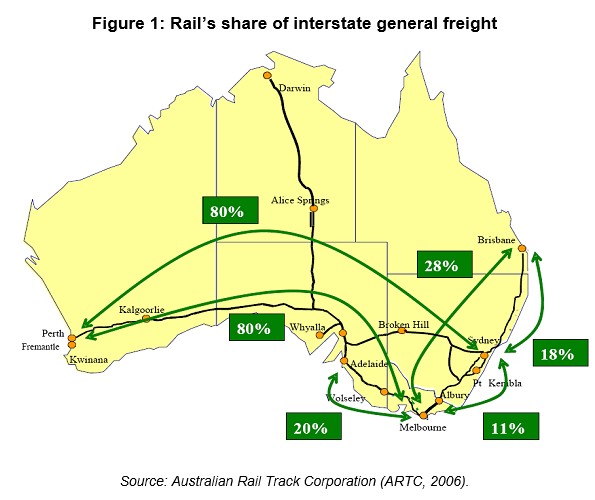Former Nationals leader, John Anderson, has called on the Federal Government to commit to funding a 1,700 kilometre inland rail freight line connecting Melbourne to Brisbane. From ABC News:
Former deputy prime minister John Anderson has warned the Federal Government it must allocate more than $1 billion in the budget to fund Inland Rail, or dump the scheme altogether.
Mr Anderson said the farm and business sectors want certainty the Government is committed to completing 1,700 kilometres of track connecting Brisbane and Melbourne, and linking south-east Queensland to Adelaide and Perth.
Farmers have lobbied governments to build an inland rail network for decades and argue the current system costs them hundreds of thousands of dollars each year because it is inefficient and slow…
“If the Government doesn’t think [Inland Rail] ought to be, then it should kill it [and] end any uncertainty,” he told the ABC.
“This sort of half pregnant stuff that we get… we’re seeing too much of that from governments”…
Previous analysis released last year by Anderson suggested an inland railway would cost $10 billion and would run through country towns like Moree, Narromine, Parkes, Wagga Wagga and Albury, thereby ensuring freight trains do not have to travel through the congested Sydney rail network.
On the face of it, building an inland rail freight network from Melbourne and Brisbane (including connections to Sydney) has merit, along with building world class intermodal connections at key locations along the way so transfers between rail and truck are fast and efficient.
Rail is particularly well suited to two types of freight:
- Bulk Freight: rail is suited to the provision of high volume bulk freight services to export facilities because it generally requires well defined point-to-point transport only (such as directly from silo/mine to port) with no requirement for trucking at any intermediate points. Rail can also transport larger volumes in shorter periods to meet shipping requirements and minimise on-port storage.
- Long-haul General (Containerised) Freight: Road has inherent competitive advantages in the transportation of short-haul general freight because of its ability to offer a flexible door to door service without modal transfer (i.e. transfer to/from rail) and its capacity to handle small shipment sizes. However, rail tends to be more price competitive over longer distances where pick-up-and-delivery costs are reduced in unit cost per kilometre terms.
However, despite the long distance between Melbourne and Brisbane, rail’s share of general freight was just 28% in 2006, whereas it was 80% between the East Coast and Perth (see below).

A key reason why rail’s share is so low is because it shares the track with the passenger rail network in Sydney, which has priority. This makes rail freight far slower and less reliable than road transport, despite what should be a strong natural advantage (i.e. the very long distance travelled).
The end result is that thousands of truck trips are taken between Melbourne and Brisbane when, given decent infrastructure, rail could easily be fulfilling the role instead.
Accordingly, road trauma is higher than would otherwise be the case, as are greenhouse gas emissions, given one long freight train could replace around 100 B-Double trucks. Farmers are also forced to endure higher costs in delivering their goods to port, thus reducing their competitiveness.
The $10 billion cost of building an inland rail freight line is also a tiny fraction of the $110 billion estimated cost of building a high speed passenger network, which has received much more political support despite dubious economic benefits.

